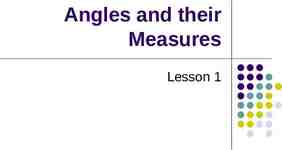Work , Power & Energy Explaining the Causes of Motion in
37 Slides920.00 KB

Work , Power & Energy Explaining the Causes of Motion in a Different Way

Work The product of force and the amount of displacement along the line of action of that force. W ork F orce displacem e nt Units: Newton meter (Joule) ft . lbs (horsepower)

Work F x d To calculate work done on an object, we need: The Force The average magnitude of the force The direction of the force The Displacement The magnitude of the change of position The direction of the change of position

Calculate Work During the ascent phase of a rep of the bench press, the lifter exerts an average vertical force of 1000 N against a barbell while the barbell moves 0.8 m upward How much work did the lifter do to the barbell?

Calculate Work Table of Variables: Force 1000 N Displacement 0.8 m Force is positive due to pushing upward Displacement is positive due to moving upward

Calculate Work Table of Variables: Force 1000 N Displacement 0.8 m Select the equation and solve: Work Force displaceme nt Work 1000 N 0.8m Work 800 Nm 800 Joule 800 J

- & Work Positive work is performed when the direction of the force and the direction of motion are the same ascent phase of the bench press Throwing a ball push off (upward) phase of a jump

Calculate Work During the descent phase of a rep of the bench press, the lifter exerts an average vertical force of 1000 N against a barbell while the barbell moves 0.8 m downward

Calculate Work Table of Variables Force 1000 N Displacement -0.8 m Force is positive due to pushing upward Displacement is negative due to movement downward

Calculate Work Table of Variables Force 1000 N Displacement -0.8 m Select the equation and solve: Work Force displaceme nt Work 1000 N 0.8m Work 800 Nm 800 Joule 800 J

- & Work Positive work Negative work is performed when the direction of the force and the direction of motion are the opposite descent phase of the bench press catching landing phase of a jump

Work performed climbing stairs Work Fd Force Subject weight From mass, ie 65 kg Displacement Height of each step Typical 8 inches (20cm) Work per step 650N x 0.2 m 130.0 Nm Multiply by the number of steps

Work on a stair stepper Work Fd Force Push on the step ? Displacement Step Height 8 inches “Work” per step ?N x .203 m ?Nm

Work on a cycle ergometer Work Fd Force belt friction on the flywheel mass (eg 3 kg) Displacement revolution of the pedals Monark: 6 m “Work” per revolution

Work on a cycle ergometer Work Fd Force belt friction on the flywheel mass (eg 3 kg) Displacement revolution of the pedals Monark: 6 m “Work” per revolution 3kg x 6 m 18 kgm

Similar principle for wheelchair

and for handcycling ergometer

Power The rate of doing work Work Fd Power Work / time Power Fd / t Power Force velocity Units: Fd/s J/s watt

Calculate & compare power During the ascent phase of a rep of the bench press, two lifters each exert an average vertical force of 1000 N against a barbell while the barbell moves 0.8 m upward Lifter A: 0.50 seconds Lifter B: 0.75 seconds

Calculate & compare power Lifter A Table of Variables F 1000 N d 0.8 m t 0.50 s Fd t 1000 N 0.8m Power 0.50 s 800 J Power 1600 w 0.50 s Power Lifter B’s time would be .75 sec instead of .5 sec

Energy Energy (E) is defined as the capacity to do work (scalar) Many forms No more created, only converted chemical, sound, heat, nuclear, mechanical Kinetic Energy (KE): energy due to motion Potential Energy (PE): energy due to position or deformation

Kinetic Energy Energy due to motion reflects the mass the velocity of the object KE 1/2 mv2

Calculate Kinetic Energy How much KE in a 5 ounce baseball (145 g) thrown at 80 miles/hr (35.8 m/s)?

Calculate Kinetic Energy Table of Variables Mass 145 g 0.145 kg Velocity 35.8 m/s

Calculate Kinetic Energy Table of Variables Mass 145 g 0.145 kg Velocity 35.8 m/s Select the equation and solve: KE ½ m v2 KE ½ (0.145 kg)(35.8 m/s)2 KE ½ (0.145 kg)(1281.54 m/s/s) KE ½ (185.8 kg m/s/s) KE 92.9 kg m/s/s, or 92.9 Nm, or 92.9J

Calculate Kinetic Energy How much KE possessed by a 68.1 kg female volleyball player moving downward at 3.2 m/s after a block?

Calculate Kinetic Energy Table of Variables 68.18 kg of mass -3.2 m/s Select the equation and solve: KE ½ m v2 KE ½ (68.18 kg)(-3.2 m/s)2 KE ½ (68.18 kg)(10.24 m/s/s) KE ½ (698.16 kg m/s/s) KE 349.08 Nm or J

Calculate Kinetic Energy Compare KE possessed by: a 220 pound (100 kg) running back moving forward at 4.0 m/s a 385 pound (175 kg) lineman moving forward at 3.75 m/s

Calculate Kinetic Energy Table of Variables m 100 Kg v 4.0 m/s Select the equation and solve: KE ½ m v2 KE ½ (100 kg)(4.0 m/s)2 KE 800 Nm or J Table of Variables m 175 kg v 3.75 m/s Select the equation and solve: KE ½ m v2 KE ½ (175)(3.75)2 KE 1230 Nm or J

Potential Energy Two forms of PE: Gravitational PE: energy due to an object’s position relative to the earth Strain PE: due to the deformation of an object

Gravitational PE Affected by the object’s weight mg elevation (height) above reference point ground or some other surface h GPE mgh

Calculate GPE How much gravitational potential energy in a 45 kg gymnast when she is 4m above the mat of the trampoline? Trampoline mat is 1.25 m above the ground

Calculate GPE GPE relative to mat Table of Variables m 45 kg g 10 m/s/s h 4m PE mgh PE 45kg * -9.81 m/s/s * 4 m PE 1765.8 J GPE relative to ground Table of Variables m 45 kg g 10m/s/s h 5.25 m PE mgh PE 45kg * -9.81 m/s/s * 5.25 m PE 2317.6 J

Conversion of KE to GPE and GPE to KE and KE to GPE and

Strain Energy When a fiberglass vaulting pole bends, strain energy is stored in the bent pole Bungee jumping When a tendon/ligament/muscle is stretched, strain energy is stored in the elongated elastin fibers .

Work - Energy Relationship The work done by an external force acting on an object causes a change in the mechanical energy of the object Fd Energy Fd KE PE 1 2 Fd m v f vi mg ( r f ri ) 2







